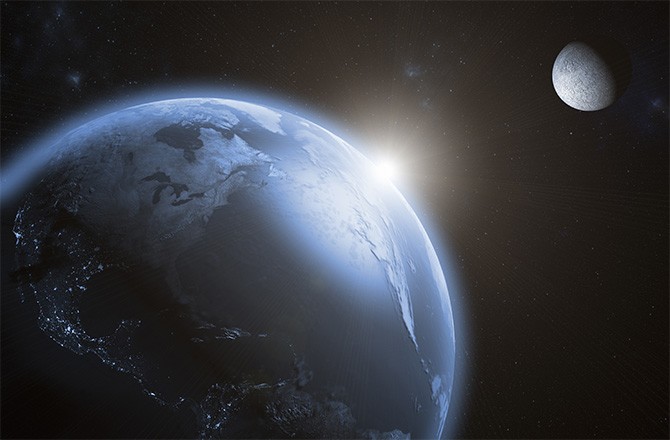Scientists continue to investigate outer space for signs of alien intelligence - without much success at the moment, but facts emerged from a Fermi paradox theory that scientists on Earth have not been able to connect with aliens in space because we don't have the waves to receive their signals, or the evolution that put man on earth is still working to evolve aliens in space.
Data collected from NASA/ESA Hubble Space Telescope and even NASA's Kepler Space Telescope indicate that Earth together with creations in it may have been an early boomer, meaning that the universe is still in the process of spawning habitable worlds where these aliens might surface.
It is on record that our Earth developed about 4.6 billion years ago - when "8% of the potentially habitable planets that will ever form in the universe existed," and that our world was born from the protoplanetary disk of our sun. This figure suggests that about 92% processes needed to create habitable planets in the universe is still running and in slow progress - and maybe this will create the creatures that will inhabit them.
"Our main motivation was understanding the Earth's place in the context of the rest of the universe," said Peter Behroozi of the Space Telescope Science Institute (STScI) in Baltimore, Md., "Compared to all the planets that will ever form in the universe, the Earth is actually quite early."
Astronomers analyzing data from Hubble believe that certain young galaxies were creating stars at a very speedy rate nearly 10 billion years ago. But the scientists surmise that the level of hydrogen and helium needed to produce more stars are is very minimal compared to the amount existing today; these gases are required to form stars.
"There is enough remaining material (after the Big Bang) to produce even more planets in the future, in the Milky Way and beyond," said Molly Peeples, also of STScI.
Combining data from Hubble and Kepler together, astronomers calculated the probable number of habitable worlds that might exist in the universe. They found that about 1 billion worlds the size of our world orbit their own stars in the Milky Way, meaning that Earth-sized planets in the cosmos will run into billions as well.



























